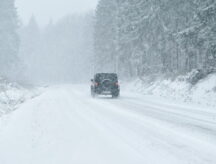Returning to Canada: Immigration checklist and best practices
The end of the year is often a time for travel, with many international students, workers, and permanent residents leaving Canada for the first time since arriving to the country.
While these individuals are allowed to return to Canada provided that their status is valid, there are often finer details to keep in mind when returning to Canada. This includes what documents you should have with you, what paperwork you may need to fill out, what you can bring with you, and more. Read on for our compiled immigration checklist and guide for those returning to Canada.
Discover if You Are Eligible for Canadian Immigration
Make sure you are carrying your original travel and immigration documents
Newcomers returning to Canada will need to carry their original travel and immigration documents when returning to Canada to show that they are authorised to both enter and stay in the country.
Note the difference between a visa and a permit. A visa (like a study or worker visa) enables temporary residents to enter Canada through a port of entry. Meanwhile a permit allows you to reside in Canada, and determines what you can do in the country, and for how long. Newcomers will need a version of both of these documents to travel.
If you are from a country that does not require a visa to come to Canada, you must instead obtain an electronic travel authorisation (eTA) from Immigration Refugees and Citizenship Canada (IRCC).
Below are some examples of what documents you may need depending on your status in Canada.
Students
International students will need to carry original copies of:
- Their passport (which must be valid at the time of entry);
- Their student visa—which will be stamped within their passport, and must be valid upon returning to Canada as well; and
- Their study permit.
Students should keep in mind that their study permit is a separate document that must be kept with other immigration documents to be granted entry by a Canadian border official.
In addition, students studying in Quebec may need to show their Quebec Acceptance Certificate (CAQ) upon arriving in the province.
Workers
Workers in Canada will need original copies of the following documents in order to travel and gain entry to Canada:
- Their passport (which must be valid at the time of entry);
- Their work visa—which can be found in their passport (and which also must be valid at the time of travel); and
- Their work permit.
Workers should keep in mind that their work permit is a separate document that must be kept with other immigration documents to be granted entry by a Canadian border official.
Note further that, depending on whether someone has an open or employer-specific work permit, they may also need to show a Labour Market Impact Assessment (LMIA), in support of their re-entry. This only applies to employer-specific (or closed) work permits, which require an LMIA in support of their work permit.
As with a study visa, if your passport is issued from a country that does not require a passport to travel to Canada, you must instead obtain an eTA.
Permanent Residents
New permanent residents will need original copies of the following documents when re-entering Canada for the first time:
- Their passport (which must be valid at the time of entry); and
- Their Permanent Residence (PR) Card (which must also be valid at the time of entry).
Permanent residents who are returning without a PR card may apply for a Permanent Residence Travel Document (PRTD), which will function as a PR card on a single-entry basis. Permanent residents must also ensure that they meet the physical presence requirements of their status, to maintain it, and allow for easy travel in and out of Canada.
Canadian Border Service Agency (CBSA) declarations
There will likely be no difference in the entry documentation that you will have to fill out upon re-entering Canada, but there are some important things to keep in mind.
Anyone entering Canada must make a declaration of assets (goods and monies) greater than $10,000 CAD in value, that are being brought into Canada. Certain airports in Canada allow advance declarations for the purposes of saving time during customs checks.
New permanent residents should also note that when making their very first landing in Canada, they are able to bring high-value assets and large numbers of items with them to Canada, tax free (though assets above $10,000 CAD in value must still be declared). In addition to this, if all assets are not present but are likely to follow, new permanent residents can declare these to CBSA officials in a goods to follow list, which will cover the remainder of assets being brought over and ensure that they are lawfully declared.
Temporary residents (work and study permit holders) should note they may not be subject to the same tax-free exemptions when bringing larger value assets into Canada.
In addition, CBSA has instituted rules on restricted and prohibited goods being brought into the country, which apply to all travellers. There are also personal use exemptions, and certain goods that must be declared. CBSA has made an official guide for travellers, available here.
Trusted Travellers Programs
On a final note, Canada also offers several trusted traveler programs, which those regularly travelling in and out of Canada may want to avail. The benefits of these programs include faster transit times through customs (both abroad and within Canada), lesser documentation requirements during travel, and more.
These programs also apply to various scenarios (i.e.: arriving by land, air, sea, etc.). A complete list of programs is available on the government webpage here.
- Do you need Canadian immigration assistance? Contact the Contact Cohen Immigration Law firm by completing our form
- Send us your feedback or your non-legal assistance questions by emailing us at media@canadavisa.com







